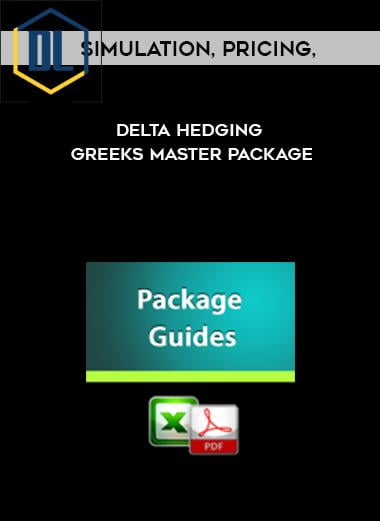-
×
 Jason Capital – Power Influence System
1 × $31.00
Jason Capital – Power Influence System
1 × $31.00 -
×
 David Morehouse – Remote Viewing Online Training Course
1 × $24.00
David Morehouse – Remote Viewing Online Training Course
1 × $24.00 -
×
 TraderLion – High Tight Flag Masterclass
1 × $47.00
TraderLion – High Tight Flag Masterclass
1 × $47.00 -
×
 Jack Hopkins – 10k Accelerator Program
1 × $9.00
Jack Hopkins – 10k Accelerator Program
1 × $9.00 -
×
 Talmadge Harper – Human Lie Detector
1 × $15.00
Talmadge Harper – Human Lie Detector
1 × $15.00 -
×
 Donna Eden – Shifting Deeply Embedded Patents
1 × $47.00
Donna Eden – Shifting Deeply Embedded Patents
1 × $47.00 -
×
 The Social Heartistry Academy
1 × $47.00
The Social Heartistry Academy
1 × $47.00 -
×
 Depesh Mandalia – The AI Powered Facebook Ads & Offers Workshop May 2024
1 × $9.00
Depesh Mandalia – The AI Powered Facebook Ads & Offers Workshop May 2024
1 × $9.00 -
×
 Immrama Institute – Infinity Program (Gentle Rain Version)
1 × $19.00
Immrama Institute – Infinity Program (Gentle Rain Version)
1 × $19.00 -
×
 Cris Chico – Find Motivated Sellers Online
1 × $54.95
Cris Chico – Find Motivated Sellers Online
1 × $54.95 -
×
 Talmadge Harper – Quantum Hypnosis Healing Personal MP3
1 × $33.00
Talmadge Harper – Quantum Hypnosis Healing Personal MP3
1 × $33.00 -
×
 Judy Carter – Comedy Career in a Box
5 × $29.90
Judy Carter – Comedy Career in a Box
5 × $29.90 -
×
 W.D. Gann – Best Trading Systems
1 × $9.00
W.D. Gann – Best Trading Systems
1 × $9.00 -
×
 Julie Solomon – Pitch It Perfect
3 × $67.00
Julie Solomon – Pitch It Perfect
3 × $67.00 -
×
 Jason Wojo – 60 Viral Video Scripts (60 Viral Topics + 60 Hooks Bundle)
1 × $11.00
Jason Wojo – 60 Viral Video Scripts (60 Viral Topics + 60 Hooks Bundle)
1 × $11.00 -
×
 Jon Rappoport – Exit From The Matrix
1 × $35.00
Jon Rappoport – Exit From The Matrix
1 × $35.00 -
×
 Digital Income Project – Content MBA
2 × $33.00
Digital Income Project – Content MBA
2 × $33.00 -
×
 Billy Gene – 5 Day AI Crash Course for Marketers
1 × $35.00
Billy Gene – 5 Day AI Crash Course for Marketers
1 × $35.00 -
×
 Annalise Buttigieg – The IG Strategy
1 × $9.00
Annalise Buttigieg – The IG Strategy
1 × $9.00 -
×
 Min Liu – Double Your Verbal Fluency
2 × $37.00
Min Liu – Double Your Verbal Fluency
2 × $37.00 -
×
 Master Trader – Learn Trading Late Day Breakouts & Breakdowns
1 × $19.00
Master Trader – Learn Trading Late Day Breakouts & Breakdowns
1 × $19.00 -
×
 Jason Linett – Age Regression Master Class
1 × $12.00
Jason Linett – Age Regression Master Class
1 × $12.00 -
×
 Ra Uru Hu – Design Concepts
1 × $85.00
Ra Uru Hu – Design Concepts
1 × $85.00 -
×
 Laura Lopuch – The Cold Email Cash Flow Method
1 × $9.00
Laura Lopuch – The Cold Email Cash Flow Method
1 × $9.00 -
×
 Daniel McEvoy – Dans Bull Run Millions Crypto Course
1 × $40.00
Daniel McEvoy – Dans Bull Run Millions Crypto Course
1 × $40.00 -
×
 Elma Mayer – Now Healing 101 Home Study Course
1 × $19.00
Elma Mayer – Now Healing 101 Home Study Course
1 × $19.00 -
×
 Donna Eden – Meridians – Acupoints and Energy Checks
1 × $27.00
Donna Eden – Meridians – Acupoints and Energy Checks
1 × $27.00 -
×
 Philipp Humm – Power of StorySelling
1 × $9.00
Philipp Humm – Power of StorySelling
1 × $9.00 -
×
 Regan Hillyer – 7 Days To A Kick Ass New You
1 × $122.00
Regan Hillyer – 7 Days To A Kick Ass New You
1 × $122.00 -
×
 Body By Rings
1 × $33.00
Body By Rings
1 × $33.00 -
×
 Qi Gong Training – Ultra Mi Zong Taoist Yoga
1 × $36.80
Qi Gong Training – Ultra Mi Zong Taoist Yoga
1 × $36.80 -
×
 Tantra Body De-armouring Tutorials
1 × $65.00
Tantra Body De-armouring Tutorials
1 × $65.00 -
×
 Jeffry Stephens & David Barron - For Hypnotists Only - Hypnotic Memory Training
1 × $37.00
Jeffry Stephens & David Barron - For Hypnotists Only - Hypnotic Memory Training
1 × $37.00 -
×
 Tammy Chambless – Multiple Entry Iron Condor
1 × $79.00
Tammy Chambless – Multiple Entry Iron Condor
1 × $79.00 -
×
 William Nutt - The Bulletproof Notion Workspace 2.0
1 × $45.00
William Nutt - The Bulletproof Notion Workspace 2.0
1 × $45.00 -
×
 Russ Horn – Ultra Blue Forex
1 × $9.00
Russ Horn – Ultra Blue Forex
1 × $9.00 -
×
 Gabriel Guerrero – Explorando Metaforas Hipnoticas
1 × $29.90
Gabriel Guerrero – Explorando Metaforas Hipnoticas
1 × $29.90 -
×
 Adrian Salisbury – Ecamm Live Academy
1 × $9.00
Adrian Salisbury – Ecamm Live Academy
1 × $9.00 -
×
 Taki Moore – Million Dollar Coach Implementation Program
1 × $19.00
Taki Moore – Million Dollar Coach Implementation Program
1 × $19.00 -
×
 Joe Dispenza – The Magic Walk: A Guided Children’s Walking Meditation
1 × $10.00
Joe Dispenza – The Magic Walk: A Guided Children’s Walking Meditation
1 × $10.00 -
×
 Sean Cooper - Conversation Hacking
1 × $31.00
Sean Cooper - Conversation Hacking
1 × $31.00 -
×
 Lisa Nichols - Motivate The Masses
1 × $77.00
Lisa Nichols - Motivate The Masses
1 × $77.00
Buy With Coupon: DLC25 (-25%)
Simulation, Pricing, Delta Hedging & Greeks Master Package
$599.00 Original price was: $599.00.$67.00Current price is: $67.00.
Product Delivery : Instant Deliver
SKU: KVG2E7U5
Categories: Instant Delivery, Internet Marketing
Tags: Delta Hedging, Greeks Master Package, Pricing, Simulation
Description
Simulation, Pricing, Delta Hedging & Greeks Master Package
Archive : Simulation, Pricing, Delta Hedging & Greeks Master Package
About the course
A great value saving combination for practitioners and students. Includes every file from our package guides on Monte Carlo Simulation, Option Pricing, Delta Hedging, Interest Rate Simulations & IRS Pricing.
The master package includes 19 EXCEL templates and 8 handy PDF files.
A great deal for customers who wanted to buy the old subscription package that has now been discontinued.
Here are the details of the individual packages that have combined within this master package. If you need a component that is not here under the same special pricing, please let us know and we would be happy to creat a custom offer for you.
Monte Carlo Simulation with Option pricing
1. Derivative Pricing
This course focuses on an alternative method of implementing a two-dimensional binomial tree compared to the traditional method of building a binomial tree in excel presented in most option pricing text books.The alternate approach is based on the techniques documented by Professor Mark Broadie at Columbia Business School as part of his coursework in Security Pricing and Computational Finance courses at Columbia University and allows us to extend a simple 3 step tree to a 50 – 100 step option pricing tree in a few minutes. It uses this alternative approach to price European & American calls and put options and Knock out and Knock in (Sudden Death) options.
2. Monte Carlo Simulation – Models and Applications
The “Monte Carlo Simulation – Models and Applications” study guide includes topics on how to build Monte Carlo simulators in EXCEL and use these models to price vanilla and exotic options; how to calculate VaR for futures and options; an alternative approach to the original Monte Carlo simulator using historical returns rather than normally distribution returns and the impact of this approach on VaR numbers; fuel hedging risk management case studies; further applications like simulating interest rate term structures and forecasting the monetary policy rate.
The Monte Carlo Simulation with Option pricing package guide also includes the following EXCEL files:
- The supporting excel file for the alternate binomial tree methodology for the products mentioned above
- Option pricing using the Traditional Binomial Tree approach
- Option pricing using the Black-Scholes option pricing formula
- An example of how the Ladder call option may be priced using Monte Carlo Simulation in EXCEL (standalone Excel file)
- Derivative Pricing using Monte Carlo Simulation EXCEL file calculates the option prices for a number of vanilla and exotic options including Asian, Barrier, Lookback & Chooser Options.
Interest Rate Simulation
The PDF file covers:
- Components of interest rate models
- Features of good models
- Criteria employed when selecting models
- Differences between various types of term structure models
- Estimation and calibration of parameters for, and construction of, the one-factor equilibrium Cox-Ingersoll-Ross (CIR) model
- Construction and utilization of the one-factor no-arbitrage Black-Derman-Toy (BDT) model
- Principal Component Analysis (PCA) for the determination of a workable number of components / factors for the Heath, Jarrow, Merton (HJM) model
- Construction of the multi-factor no-arbitrage Heath-Jarrow-Merton (HJM) model
EXCEL files included:
- Zero Coupon and Forward rate term structures derivation and construction (pre-requisite)
- Calibration of a CIR Model’s parameters to a historical rates data set
- Construction of a BDT model
- Utilization of the results of a BDT model
- Principal Component Analysis
- Construction of a HJM 3-factor model
Hedging Higher Order Greek
The course provides a step by step guide on how to build a hedging model that considers hedging the higher order Greeks of the trader’s position. The model is EXCEL based and uses the Solver functionality. The course discusses the setting and purpose of the objective function and constraints. It explains the results in light of various objectives including lower cost, minimization of gamma & vega, etc.
Two simplistic illustrations, one based on hedging a single short position, the other based on hedging a portfolio of short positions, walk the reader through the various elements of the model. Tweaks to the base model are discussed to show how results are impacted when constraints and objectives are changed. Constraint redundancy and portfolio allocation limits are also considered.
The package consists of a PDF course and supporting EXCEL file containing the model.
Constructing Volatility Surfaces in EXCEL
A volatility surface plots market consistent volatilities across moneyness (strike prices) and maturity (time to expiry). Within the surface market consistent volatilities are referred to as local volatilities. Rather than backing out volatility by applying the Black Scholes model in reverse to at the money options, local volatilities use implied volatilities and a one factor Black Scholes model to drive local volatility values across the surface.
Volatility surfaces, like Option Greeks, are among the last topics that get covered in a graduate level course on option pricing. Most schools and professors give it a wide berth in undergraduate and graduate level courses since it is based on an advance practitioner level understanding of the subject. While the topic may get some coverage in a level I course, a level II or level III course is what you need to enroll into to finally build the surface.
If you are familiar with Black Scholes equation and pricing models used for pricing European options, calibrating volatility surfaces is one of the tweaks market practitioners use to side step the constant volatility assumption.
The volatility surface package includes the following:
- A 30 page PDF guide that shows how to build a volatility surface step by step in EXCEL using Dupire’s formula.
- An EXCEL spreadsheet that is used as a simple teaching template by the PDF tutorial above. The Excel sheet shows the implementation of Dupire’s formula as well as the resultant volatility surface. The sheet also shows Taleb’s implementation of implied forward volatility using term structure of volatility concepts.
Delta Hedging Greeks – EXCEL
This product contains 3 EXCEL files.
1. Greeks
- Calculation of the Black Scholes option price for a European Call and a European Put option
- Calculation of Greeks- Delta, Gamma, Vega, Theta & Rho- for a European Call and a European Put option
- Data table that captures the Black Scholes risk adjusted probabilities and option premium across a series of volatilities
- Graphical representation of Black Scholes risk adjusted probabilities and option premium against volatilities
- Data tables that capture the sensitivity of the Greeks against Spot, Strike, Time to maturity, Volatility and the Risk Free Rate respectively
- Graphical representation of the sensitivities of the various Greeks against Spot, Strike, Time to maturity, volatility and risk free rate respectively
2. Delta Hedging – Call Option
- Calculation of a 12-step Monte Carlo simulation model that generates the underlying stock price series
- Calculation of theoretical option values using the Black Scholes call option price formula
- Calculation of call option deltas at each rebalancing interval
- Calculation of a replicating portfolio that consists of a long position in Delta times the stock and a short position in the amount borrowed (net of the option premium received at inception) to fund the initial & subsequent incremental purchases
- Graphical representation of the theoretical option value and the replicating portfolio value over the life of the option
- Calculation of a tracking error for the difference between the value of the replicating portfolio and the theoretical value of the option
- Graphical representation of the tracking error across the life of the option
- Determination of the per period interest and principal portions of the amount borrowed
- Determination of the Gain (Loss) on sale of portions of the stock
- Setting up a Cash Accounting P&L that shows cash inflows from option premium received and strike received in the event the option is exercise and cash outflows from interest and principal repayment on the amount borrowed
- A choice of including of excluding the option premium in determining the amount borrowed at inception. In this case the Principal repaid will equal the gain (loss) if the option is not exercised.
- 100 simulated runs including a graphical depiction of the results showing the Net P&L, Amount borrowed (principal & interest) and Gain/ Losses; and averages across the 100 runs for each of these items
3. Delta Hedging – Put Option
- Calculation of a 12-step Monte Carlo simulation model that generates the underlying stock price series
- Calculation of theoretical option values using the Black Scholes put option price formula
- Calculation of put option deltas at each rebalancing interval
- Calculation of a replicating portfolio that consists of a short sale of Delta times the stock and lending of the initial (net of the option premium received at inception) & subsequent incremental short sales proceeds
- Graphical representation of the theoretical option value and the replicating portfolio value over the life of the option
- Calculation of a tracking error for the difference between the value of the replicating portfolio and the theoretical value of the option
- Graphical representation of the tracking error across the life of the option
- Determination of the per period interest and principal portions of the amount lent
- Determination of the Gain (Loss) on closing of short sale positions
- Setting up a Cash Accounting P&L that shows cash inflows from option premium received, interest earned on amount lent and sales proceeds from short sales and cash outflows from strike paid if the option is exercised
- A choice of including or excluding the option premium in determining the amount borrowed at inception. In this case the sales proceeds from short sales will equal the gain (loss) if the option is not exercised.
- 100 simulated runs including a graphical depiction of the results showing the Net P&L, Proceeds from Short Sales, Interest Earned and Gain/ Losses; and averages across the 100 runs for each of these items
Pricing Interest Rate Swaps & Options
Topics covered:
- Definition of different types of interest rates
- Overview of swap contract variations
- Summary of the pricing process for interest rate swaps
- Step-by-step methodology for deriving zero coupon and forward rate term structures
- Step-by-step procedures for determining the price of interest rate swaps, Cross currency swaps,Interest rate options
The EXCEL files:
- The calculation of zero coupon and forward rate curves from the par term structure
- The calculation of prices of interest rate swaps and cross currency swaps
- The calculation of prices of interest rate options
Delivery Policy
When will I receive my course?
You will receive a link to download your course immediately or within 1 to 21 days. It depends on the product you buy, so please read the short description of the product carefully before making a purchase.
How is my course delivered?
We share courses through Google Drive, so once your order is complete, you'll receive an invitation to view the course in your email.
To avoid any delay in delivery, please provide a Google mail and enter your email address correctly in the Checkout Page.
In case you submit a wrong email address, please contact us to resend the course to the correct email.
How do I check status of my order?
Please log in to TheDLCourse account then go to Order Page. You will find all your orders includes number, date, status and total price.
If the status is Processing: Your course is being uploaded. Please be patient and wait for us to complete your order. If your order has multiple courses and one of them has not been updated with the download link, the status of the order is also Processing.
If the status is Completed: Your course is ready for immediate download. Click "VIEW" to view details and download the course.
Where can I find my course?
Once your order is complete, a link to download the course will automatically be sent to your email.
You can also get the download link by logging into your TheDLCourse account then going to Downloads Page.
Related products
-85%
-70%
-100%
-99%
-97%
-98%
-87%
-92%







